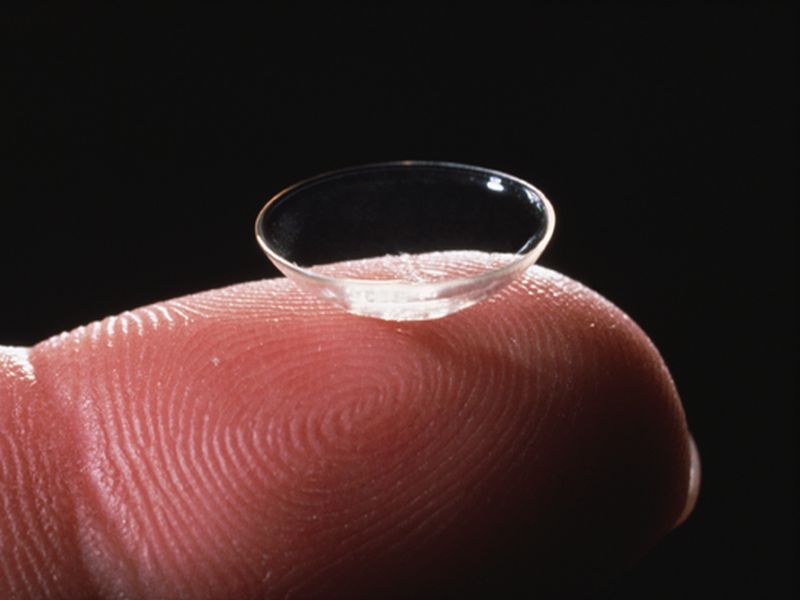Manténgase sano!

- Posted August 13, 2020
Special Contact Lenses Can Help Curb Nearsightedness in Kids
Kids suffering from nearsightedness can slow the progression of their myopia by using soft bifocal contact lenses, a new trial shows.
Bifocal contacts with a powerful corrective prescription slowed the progression of nearsightedness in youngsters by 43% compared to single-vision contacts, the results showed.
"The higher the reading portion of the contact lens, the better control you get, the more slow the progression," said lead researcher Jeffrey Walline, associate dean for research at Ohio State University's College of Optometry, in Columbus.
Based on these findings, Walline said parents should talk with their family eye doctor about bifocal contacts for their nearsighted child, to prevent potentially devastating eye conditions associated with myopia, including cataracts, glaucoma or retinal detachment.
"It's not something that's coming out farther on down the line. They are available," Walline said. "I think we're at the place where parents of nearsighted children should know they have options for myopia control."
Nearsightedness occurs when the eye grows in an uncoordinated way into an elongated state, so that light entering the eye fails to reach all the way back to the retina.
"That's what myopia is," said Dr. Douglas Fredrick, a pediatric ophthalmologist at New York Eye and Ear Infirmary of Mount Sinai in New York City. "It's a long eyeball, the physical elongation of the eye."
Eye experts used to think that nearsightedness developed because the mechanical effort of focusing on objects had some effect on the eye that led to the eyeball growing long, Fredrick said.
"More recent evidence suggests that the way light is focused inside the eye has an effect on how the eye grows," he explained.
Bifocal contacts resemble a bullseye. The center part of the contact corrects nearsightedness so that distance vision is clear, focusing light directly on the retina. Meanwhile, the outer edge of the contact adds focusing power, which brings peripheral light rays into focus in front of the retina.
This combination appears to trick the eye into slowing its growth, prior research has indicated.
The new clinical trial, called BLINK, is the largest and longest ever conducted into the potential benefits of bifocal contacts for kids, Fredrick said.
The study involved more than 290 kids in Ohio and Texas who were randomly assigned to wear either high-powered bifocal contacts, medium-powered bifocal contacts or single-vision contacts.
The kids were followed for about three years; earlier bifocal contact studies have lasted two years, Fredrick noted.
High-powered bifocal contacts effectively slowed the progression of nearsightedness, while medium-powered bifocal contacts and single-focus lenses did not.
The high-powered bifocal lenses also did not appear to hurt kids' vision, even though they were subjected to stronger reading power before they needed that level of correction, the researchers said. When testing kids' ability to read gray letters on a white background, there was a two-letter difference between children wearing single-vision lenses and those with bifocal contacts.
The BLINK trial, which was funded by the U.S. National Eye Institute, is important because most previous bifocal contact studies have been conducted in Asian countries, and in Asian kids the rate of myopia progression "can be up to twice as much and twice as fast," Fredrick said.
Bifocal soft contacts cost about $400 a year, and are very safe for children, Walline said.
"Children can independently wear and care for these contact lenses in the age range of nearsightedness, starting about age 7 and beyond," Walline said. "Kids can put them in themselves, take them out themselves and clean them themselves."
However, longer studies are needed to verify the ultimate goal of this treatment -- to prevent the development later in life of eye diseases that could cost a person their vision, Fredrick said.
"Whether this would eventually decrease the rates of pathologic myopia, myopia associated with irreversible vision loss -- that's a real question that only long-term studies will answer," Fredrick said.
The findings were published Aug. 11 in the Journal of the American Medical Association.
More information
The American Academy of Ophthalmology has more about alternative treatments for childhood myopia.
SOURCES: Jeffrey Walline, PhD, associate dean, research, Ohio State University's College of Optometry, Columbus; Douglas Fredrick, MD, pediatric ophthalmologist, New York Eye and Ear Infirmary of Mount Sinai, New York City; Journal of the American Medical Association, Aug. 11, 2020
